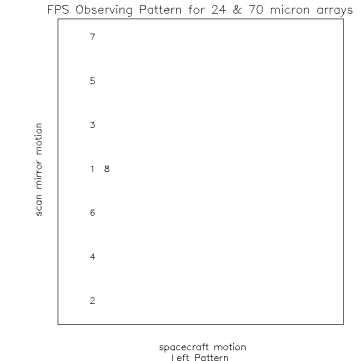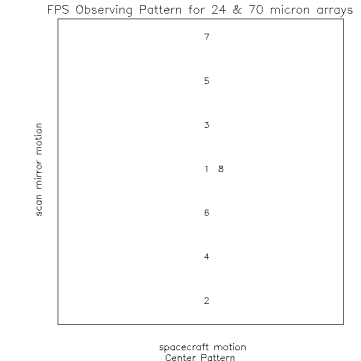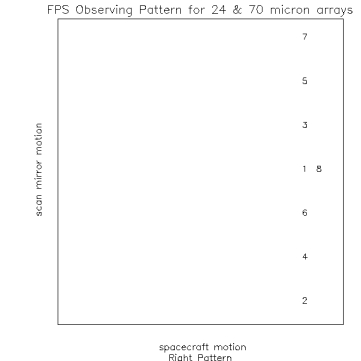Observing Strategy



Figure 1. Observing Pattern at 3 locations on the detector. Note size of
box is not the total size of the array but a portion of the central
region which depends on array and if it is a coarse or fine survey
Principal: Jocelyn Keene
Deputy: Jane Morrison, Bill Wheaton
Data Monkey(s): Jane Morrison and Bill Wheaton
Priority: Critical
Downlink Priority: Normal
Analysis Time: Campaign Q: 2880 minutes, Campaign R: 2880 minutes, combining campaign Q and R: 120 minutes
Last Updated:
For the selected calibration star see the IER for this survey. The requirements on the 70 µm fine focal plane calibration star are as follows:



Figure 1. Observing Pattern at 3 locations on the detector. Note size of
box is not the total size of the array but a portion of the central
region which depends on array and if it is a coarse or fine survey
Number of observations from step 1-5, 66. Step 1-5 repeated 7 times for a total of (66 * 7) = 462 observations. Repeat entire set for a total of 924 observations
Array Data Desired:
70 µm Wide
Data Reformatting Option: